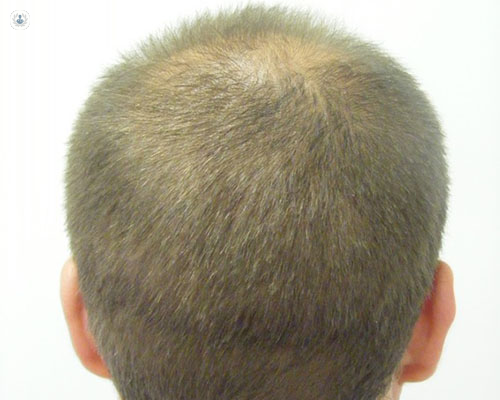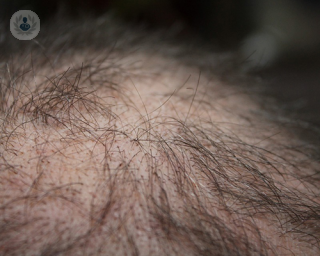Scalp micropigmentation
Dr Rachael Louise Kay - Aesthetic medicine
Created on: 09-25-2015
Updated on: 09-18-2023
Edited by: Conor Dunworth
What is scalp micropigmentation?
Scalp micropigmentation is a non-surgical technique that helps create fuller-looking hair by injecting natural pigments into the scalp to replicate the natural appearance of real hair. It is useful for people who experience hair loss as a result of:
Scalp micropigmentation was initially created as a reconstructive technique for people who lost hair following treatment or invasive surgery.
Micropigmentation is also commonly used on the chest, eyebrows and lips. It is non-permanent and, depending on the type of skin, can last between two to three years.
It is an outpatient procedure that takes between two and three sessions to complete, lasting around one to two hours. It is done under local anaesthetic so the process shouldn’t be painful.
Why is scalp micropigmentation performed?
Scalp micropigmentation was created as an alternative to hair transplantation. The technique is typically performed on people with irreversible hair loss and low capillary density, which makes a hair transplant unfeasible in these patients. Additionally, it is a cheaper alternative to hair transplantation or grafting.

What does scalp micropigmentation consist of?
Scalp micropigmentation consists of injecting natural pigment 0.25 to 1.75 millimetres into the scalp to give the skin a hue similar to that of the patient’s hair colour. A specialist uses a series of machines and techniques that are specially adapted to inject into the scalp.
How do you prepare for scalp micropigmentation?
Most of the time, no special preparation is needed before undergoing a scalp micropigmentation procedure. Beforehand, the patient is usually fully informed of what happens during the procedure, how long it takes and what the final results will look like.
The patient must inform the specialist carrying out the procedure if they suffer from any type of contagious disease than can be transmitted through blood, as micropigmentation includes the use of needles that could be a health risk for the specialist.
The patient should avoid consuming alcoholic beverages a couple of days before the procedure, as well as not consuming blood-thinning medications, such as aspirin.
Aftercare
Once the micropigmentation procedure has finished, it is common for the patient to suffer some degree of inflammation on the scalp. Additionally, some pores may expel some of the ink, however, it shouldn’t affect the final result.
During the first few days, the scalp will generate a light scab that will produce a darker shade than desired, although once the colour fades, it will gradually lighten. It typically takes around ten to twenty days for the desired shade to be seen.
Alternatives to scalp micropigmentation
The main alternative to micropigmentation is hair grafting. In this case, there are two types of hair grafting, or hair transplantation, techniques: the FUE technique and the FUSS technique.
- FUE — Also known as follicular unit extraction, it is considered the most advanced hair transplant technique nowadays and consists of individually extracting hair follicles from the donor area and implanted in the area of the scalp experiencing hair loss, without leaving scars.
- FUSS — a scalpel is used to remove a unit of hair from the donor area then implanted in the bald area. Stitches are needed to close the area. There is usually a very subtle scar after undergoing this procedure.




